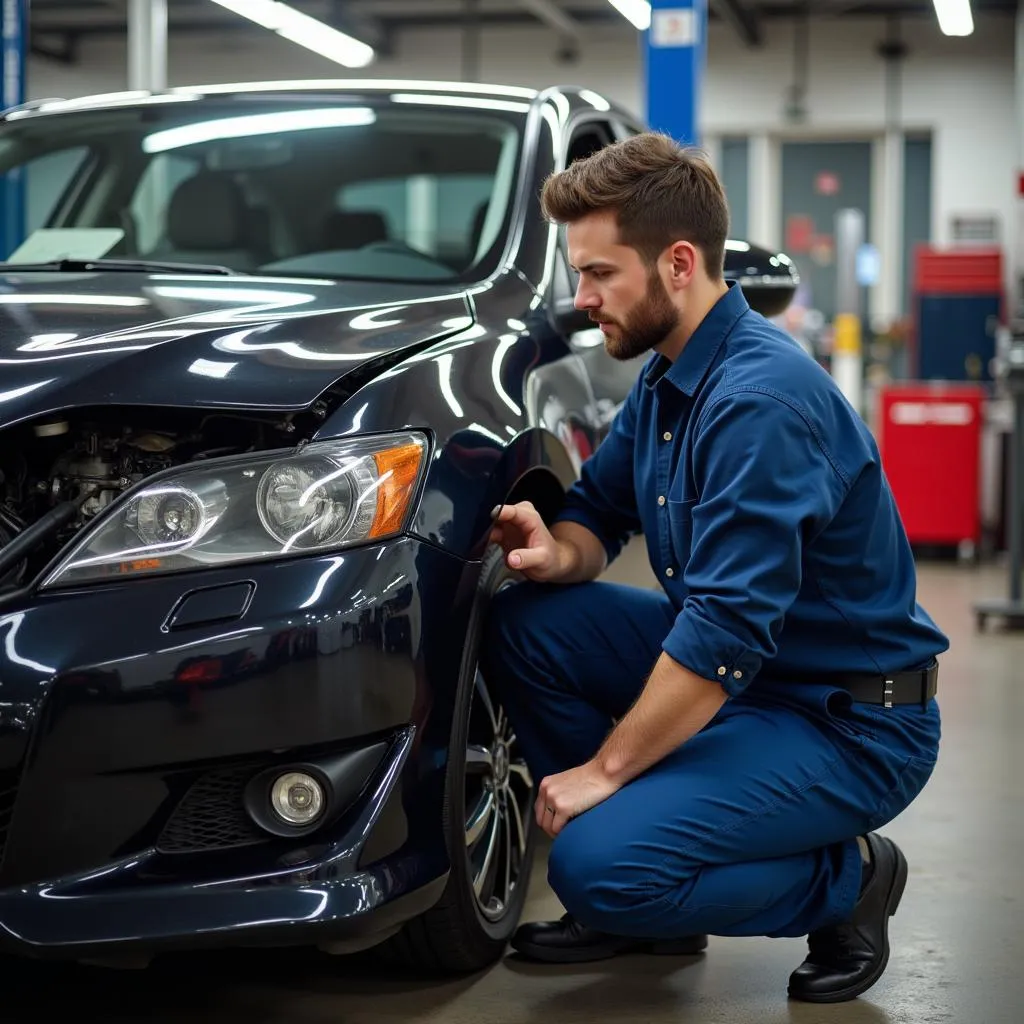Can You Trade In a Financed Car With Damage?
Trading in a car can be a great way to offset the cost of your next vehicle purchase. But what happens when the car you want to trade in has existing financing and damage? It might seem like a complicated situation, but it’s not uncommon. This comprehensive guide will walk you through the process and answer all your questions about trading in a financed car with damage.
Understanding Your Financial Situation
Before you even consider trading in your car, it’s crucial to know where you stand financially. Start by contacting your lender to determine the following:
- Outstanding Loan Balance: Find out the exact amount you still owe on your car loan.
- Payoff Amount: Request a “payoff quote” from your lender. This figure includes your loan balance plus any potential fees or interest.
- Loan Terms: Review your loan agreement for any prepayment penalties that might apply if you pay off your loan early.
Assessing the Damage to Your Vehicle
Not all damage is created equal. A small dent is different from a major engine problem when it comes to your car’s value. To determine the best course of action, consider these factors:
- Severity of the Damage: Is it minor cosmetic damage, or does it affect the car’s functionality?
- Repair Costs: Get an estimate from a trusted mechanic to understand the financial commitment involved in fixing the damage.
- Impact on Car’s Value: Research how the damage might affect your car’s trade-in value. Online valuation tools can give you a general idea.
 Mechanic Assessing Damage on a Car
Mechanic Assessing Damage on a Car
Exploring Your Options
Once you have a clear picture of your finances and the car’s condition, you can explore the available options for trading in your financed car with damage:
1. Repair the Damage Before Trading In
If the damage is relatively minor and the repair costs are manageable, fixing the car before trading it in might be your best bet. While you’ll need to invest upfront, this approach can increase your car’s trade-in value significantly.
Pros:
- Higher Trade-in Value: A car in good condition will command a better price.
- Better Negotiation Position: You’ll have more leverage during negotiations with a more desirable vehicle.
Cons:
- Upfront Costs: You’ll need to pay for the repairs before trading in the car.
- No Guarantee of Recouping Costs: You might not fully recover the repair costs in the trade-in value.
2. Trade In the Car “As Is”
If the damage is substantial or the repair costs are too high, you can opt to trade in your car “as is.” Many dealerships accept cars with damage, factoring the repair costs into their offer.
Pros:
- Convenience: Avoid the hassle and expense of repairing the car yourself.
- Faster Process: You can trade in your car and purchase a new one in one go.
Cons:
- Lower Trade-in Value: Expect a significantly lower offer compared to a car in good condition.
- Limited Negotiation Power: You’ll have less room to negotiate a better price.
 Trading in a Damaged Car at a Dealership
Trading in a Damaged Car at a Dealership
3. Sell the Car Privately
Selling your car privately can be an option, but it comes with its own set of challenges when dealing with financing and damage.
Pros:
- Potential for Higher Sale Price: You might get a better price than a dealership trade-in offer.
Cons:
- More Time and Effort: Listing, showing, and negotiating the sale yourself requires time and effort.
- Dealing with Financing: You’ll need to navigate paying off the loan during the sale.
- Disclosing Damage: Be upfront about the damage to potential buyers to avoid legal issues later on.
4. Keep the Car
Depending on the extent of the damage and your financial situation, keeping the car might be a viable option.
Pros:
- No Need to Buy a New Car: You can continue using your current vehicle.
- Time to Save for Repairs or a New Car: This allows you to save up for repairs or a down payment on a new car.
Cons:
- Continued Depreciation: The car’s value will continue to decrease over time.
- Potential Safety Concerns: Driving a damaged car can pose safety risks depending on the severity of the damage.
Negotiating the Best Deal
Regardless of the option you choose, negotiating the best deal is essential. Here are some tips:
- Research and Compare: Get trade-in quotes from multiple dealerships to understand the market value of your car in its current condition.
- Highlight Positive Features: Even with damage, focus on your car’s positive attributes, such as low mileage or a well-maintained interior.
- Be Transparent About Damage: Honesty is key. Provide accurate information about the damage and any repairs done.
- Don’t Settle: Negotiate firmly but fairly. You don’t have to accept the first offer.
- Consider Your Bottom Line: Know how much you’re willing to accept or pay and be prepared to walk away if necessary.
 Negotiating a Car Trade-in Deal
Negotiating a Car Trade-in Deal
Making an Informed Decision
Trading in a financed car with damage doesn’t have to be overwhelming. By understanding your options, assessing the damage, and being prepared to negotiate, you can navigate the process with confidence. Remember, there’s no one-size-fits-all answer. The best approach depends on your individual circumstances and financial situation.
